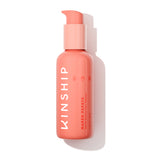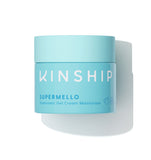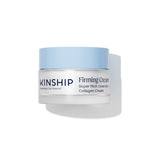Using a cleanser is an essential step for any skincare regimen.
A face cleanser removes dirt, oil, makeup, and other impurities that build up on the skin throughout the day.
Proper cleansing helps maintain healthy, clear skin by preventing clogged pores, breakouts, and dullness.
Therefore, understanding how to use a cleanser correctly can significantly enhance the effectiveness of your skincare regimen.

What Are Cleansers?
A cleanser is a skincare product designed to remove dirt, oil, makeup, and impurities from the skin.
They come in various forms—gel, foam, cream, and micellar water—each suited for different skin types and concerns.
For instance, gel cleansers are great for oily skin, while cream cleansers work well for dry skin. Other cleansers are formulated to be safe for sensitive skin.
Using the right facial cleanser in your best skincare routine helps maintain a clean and healthy complexion.
It can ensure your skin is free from pollutants and excess sebum that can clog pores and cause breakouts.
Proper cleansing allows your skin to better absorb other skincare products like serums and moisturizers.
Recommended Products
What Do Cleansers Do?
Cleansers serve as the first step in a skincare routine. They target and dissolve dirt, oil, makeup buildup, and other blemishes on the skin's surface.
This is crucial because it prevents your pores from getting clogged, which can lead to acne breakouts.
Plus, a good cleansing prepares your skin to better absorb the rest of your skincare products, like serums and moisturizers.
But cleansers do not just help wash your face. They also help maintain your skin's pH balance.
A balanced pH level also supports your natural skin barrier, protecting your skin from environmental aggressors.
How to Use Facial Cleansers

This section covers everything you need to know about applying cleanser properly for maximum effect.
Step 1: Get Your Hair Out of the Way
Before cleansing, secure your hair back with a headband, hair tie, or clips. This will prevent your hair from getting wet and ensure your face is fully accessible.
This might seem minor, but it ensures your facial cleanser can reach every corner of your face without any additional hair products getting in the way.
Step 2: Wash Your Hands
Next, wash your hands with soap and warm water before touching your face.
Cleaning your hands before applying cleanser will eliminate dirt, oils, or bacteria. This can help prevent breakouts by stopping these potential irritants from reaching your skin.
Step 3: Splash Your Face with Water
Using lukewarm water, wet your face to open your pores and prepare for the cleanser. This temperature is ideal because it is gentle on the skin and helps loosen dirt and oil.
Avoid hot water, as it can strip essential oils from your skin and lead to unwanted dryness.
Keep it lukewarm for a balanced and effective deep cleansing routine.
Step 4: Apply the Cleanser to Your Face
Now for the application. Dispense a dime-sized amount of cleanser onto your clean, damp skin.
Make sure to apply cleanser on all areas, including your forehead, cheeks, nose, and chin.
If you use a foaming cleanser, create a lather first.
Proper application techniques are essential for removing makeup impurities and maintaining skin health.
Step 5: Gently Massage It In
Once you have applied the cleanser to your face, work it into your skin for 30 seconds to a minute.
This helps the cleanser effectively deep cleanse and break down dirt, oil, and makeup.
Gently massage it in to ensure the cleanser penetrates deeply. Rough handling could irritate your skin.
Use small, circular motions to ensure the cleanser penetrates deeply, but always be gentle to maintain the health of your skin.
This step is essential for truly clean skin, so do not rush it.
Step 6: Rinse
After gently working the cleanser into your skin, it is time to rinse it off.
For this step, use more lukewarm water—it is the best choice for removing all traces of the cleanser without shocking your skin.
You can use your hands or a clean washcloth, depending on your preference.
Make sure you thoroughly wash the cleanser away. Any cleanser left behind can lead to dryness or irritation.
So, take your time to wash away the facial cleanser you just used.
Step 7: Continue with the Rest of Your Routine
After thoroughly rinsing your face, gently pat your face dry with a clean, soft towel.
Also, avoid rubbing, as this can irritate your skin. Now, it is time to apply the rest of your skincare products.
Start with a toner if you use one, followed by a serum, and then apply your moisturizer.
Remember to finish with sunscreen if you are doing your skincare routine in the morning.
It is important to select post-cleansing skincare products that are appropriate for your skin type and address your unique skin issues.
Types of Cleansers
This section details the various types of cleansers available, each with unique benefits for different skin types.
- Gel Cleanser: Lightweight and effective for oily and acne-prone skin, these remove excess oil without over-drying.
- Foam Cleanser: It creates a lather that deeply cleanses pores, making it ideal for combination skin.
- Cream Cleanser: Rich and hydrating, suitable for dry or mature skin.
- Oil Cleanser: Dissolves makeup and impurities gently, making them perfect for dry and sensitive skin types.
- Cleansing Balm: Balm cleansers dissolve makeup, dirt, and oils while nourishing dry skin and attracting excess oil from oily skin.
- Micellar Water: A no-rinse option that requires a cotton pad. It suits all skin types, especially for quick and gentle cleansing.
How Often Should You Use Cleansers?
Cleanse your face twice daily: once in the morning and once at night.
Morning cleansing removes overnight sweat and oil buildup, while evening cleansing removes makeup, dirt, and pollutants accumulated throughout the day.
However, remember to tailor your approach according to your skin type.
Doing a double cleanse daily might be too much if your skin leans towards the sensitive side. It could strip the skin of its sebum and cause more harm than good.
In cases like the above, stick to a nightly cleanse.
How to Choose the Right Cleanser for You
Choosing the perfect cleanser for your skin type and specific skin concerns is crucial. It is best to get a cleanser that complements your skin's needs.
Different cleansers will perform better on different skin types, like the following.
- Oily: Foaming cleanser removes excess oil without over-drying the skin.
- Dry: Opt for cream or oil cleansers that provide moisture and boost collagen production.
- Sensitive: For those with this skin type, the simpler, the better—seek out gentle cleaners that do not contain harsh additives.
- Acne-Prone: Look for cleansers with active ingredients like salicylic acid to remove dead skin cells and combat acne.
If you are looking for excellent options, consider these cleansers from Kinship.
1.) Naked Apple Niacinamide Deep Pore Gel Cleanser
This one is perfect for acne-prone and oily skin.
This facial cleanser uses apple extract and Niacinamide to gently cleanse and exfoliate, helping to control blemishes and remove excess oil without over-drying the skin.
2.) Naked Papaya Gentle Enzyme Milky Cleanser
This cleanser is designed for dry and sensitive skin.
It features papaya enzyme, jojoba oil, and other active ingredients to gently exfoliate and hydrate, removing impurities while maintaining moisture.
This gentle cleanser soothes and nourishes the skin, making it perfect for your daily routine.
Additional Cleanser Tips
Here are some bonus tips for getting the most out of your cleanser and establishing a solid foundation for your skincare routine.
- Avoid Over-Cleansing
Washing your face too frequently can disrupt your skin's natural balance. Over-cleansing can trigger more oil production as your skin tries to rebalance.
Stick to cleansing twice or once daily if you have extra delicate skin.
- Use Lukewarm Water
Hot water dries out your skin, while cold water may not properly remove all impurities. Lukewarm water is the perfect temperature for cleansing.
- Be Gentle
Scrubbing your face too roughly can damage the skin. Use gentle, circular motions when applying and rinsing off the face cleanser.
- Choose the Right Products
Ensure all skincare products used to wash your face are appropriate for your skin type and concerns.
Do a patch test first before purchasing a product. Apply cleanser to your inner arm first and wait for 24 hours. You can use it on your face if your skin does not show any irritation.
- Double Cleanse (Optional)
For those who wear heavy makeup, consider double cleansing or washing your face twice before starting your skincare routine.
First, use an oil-based makeup remover to remove makeup, then rinse and pat dry with a clean towel. Next, apply a regular cleanser to wash away any remaining residue.
Frequently Asked Questions (FAQs)
This section addresses common questions related to facial cleansers.
Which Is Better: Soap or Cleanser?
Facial cleansers are better than bar soap in terms of preserving your skin's natural oils.
Cleansers are formulated to be gentle on the skin and preserve its natural oils. In contrast, bar soaps can be harsh and strip away these oils, leaving the skin dry, irritated, and vulnerable.
Is Cleanser Good for Acne?
The right facial cleanser can help remove bacteria that contribute to acne breakouts.
Thorough cleansing also removes dead skin cells, allowing acne medication to penetrate deeper and work more effectively.
Can I Use Cleanser Without Moisturizer?
When you cleanse, you inevitably strip away some natural oils, moisture, and dirt and oil. This can leave your skin feeling clean but vulnerable to dryness and environmental damage.
Following up with a moisturizer is essential to restore hydration and protect your skin.
Key Takeaways on How to Use Cleanser
Unlocking healthy skin starts with the right facial cleanser.
Choosing the perfect formula, following the proper steps in washing your face, and incorporating them into a consistent routine are all foundational for a healthy skin regimen.
Deep cleansing is about removing impurities while respecting your skin's natural balance.
Recommended Products



